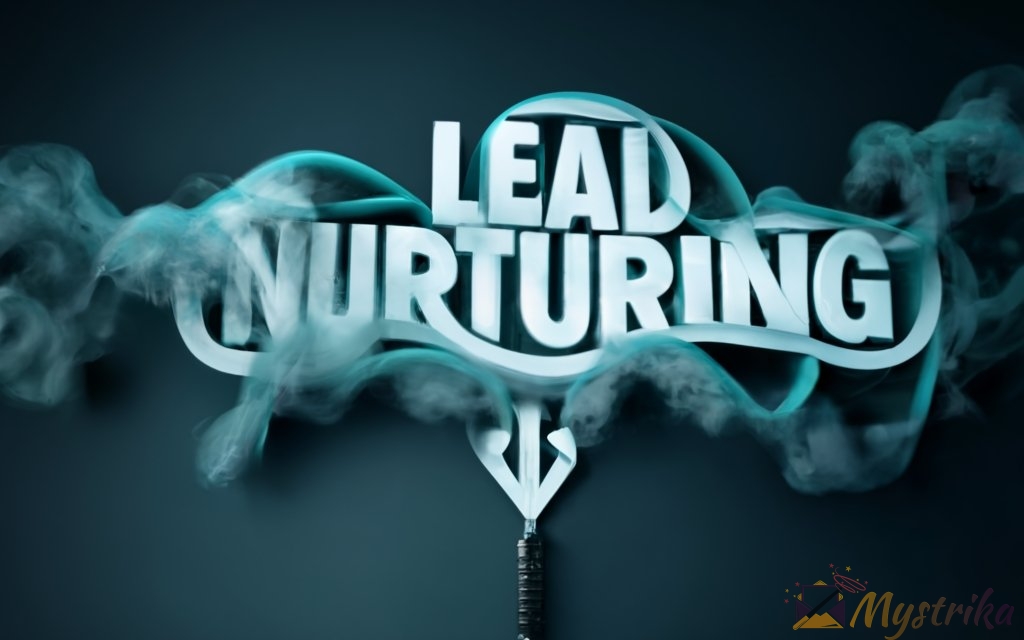In the age of the empowered buyer, sales teams can no longer rely on cold calls and basic follow-ups to convert prospects. Today’s consumers expect ultra-personalized, on-demand engagement tailored to their needs. That’s where savvy lead nurturing services come in. This guide explores how specialized agencies equip your sales and marketing teams to build trusted relationships that turn passive visitors into engaged, sales-ready customers. You’ll discover how thoughtful nurturing journeys net 47% larger purchases and 3-5X ROI when executed by industry experts. Ready to say goodbye to cold leads and transform your sales pipeline? Let’s dive in!
What is Lead Nurturing?
Imagine you just had a great sales call with a promising lead. They checked all the boxes – urgent need, budget approved, authority to make a purchase decision. But when you follow up a week later, crickets. What happened? Maybe a competitor swooped in with a lower price. Or possibly an internal decision caused a delay. Without proper ongoing engagement, even qualified leads go cold.
This is where lead nurturing comes in. While lead generation focuses on identifying and capturing new potential customers, lead nurturing is the process of developing relationships with prospects to guide them through their buyer’s journey. It involves building awareness, trust, and interest through ongoing, personalized communication across multiple channels over time.
The goal of lead nurturing is to turn cold or unqualified prospects into sales-ready leads by addressing their concerns, needs, and questions throughout the different stages of their decision making process. Instead of treating prospects uniformly, nurturing recognizes that buyers take time and need customized information to make purchasing choices.
How Lead Nurturing Works
Lead nurturing starts once a prospect enters your sales funnel, typically by signing up for a newsletter, downloading educational content, or interacting on social media. At this point, they likely aren’t ready to buy yet. This is where nurturing campaigns come in to build awareness and engagement.
Campaigns utilize a variety of tactics from email sequences to direct mail to social media ads. Content is focused on topics and issues your ideal customer cares about to provide value and build trust. Dynamic personalization ensures messaging resonates and relates directly to each prospect.
As prospects consume content and have sales conversations, their behaviors provide insights into their specific needs and interests. Your nurturing program can then adapt and customize messaging accordingly, accelerating the sales cycle.
For example, someone who downloads a pricing guide might then receive targeted content about your product’s key differentiators. Or if they visit certain product pages on your site, they could get an email with similar product recommendations.
The Benefits of Lead Nurturing
Investing in thoughtful, multi-touch nurturing provides many advantages compared to sporadic sales outreach alone:
- Higher conversion rates: According to HubSpot, nurtured leads make 47% larger purchases than non-nurtured leads. Ongoing relevant communication builds trust to make prospects more likely to buy.
- Shorter sales cycle: Supplying prospects with the right information when they need it accelerates purchase decisions. 79% of marketing and sales professionals say that nurturing shortens sales cycles.
- Improved productivity: Since properly nurtured leads are sales-ready, reps spend less time prospecting and more time closing. Studies show over 300% more sales opportunities from nurtured leads.
- Enhanced customer lifetime value: Nurturing helps establish strong relationships from the first touch, increasing customer retention and repeat sales.
- Better alignment with buyer journey: Customized nurturing content matches how modern buyers want to research and shop, on their own timelines.
- Consistent brand experience: Coordinated nurturing across channels strengthens brand awareness and trust throughout the buyer’s journey.
When done right, lead nurturing generates higher quality sales opportunities to boost revenue. But first, let’s look at how it differs from lead generation.
Lead Generation vs. Lead Nurturing
While lead generation and nurturing work hand-in-hand, they have distinct differences:
- Focused on identifying and capturing new leads
- Casts a wide net through broad targeting
- Goal is to bring visitors into funnel
- Often relies on purchased contact lists
- Metrics like impressions and form fills
Lead Nurturing
- Focused on developing relationships with existing leads
- Personalized communication matched to needs
- Goal is to convert prospects into buyers
- Engages organically captured leads
- Metrics like engagement, conversions
Lead generation brings people in the door, while nurturing guides them through your sales pipeline. One precedes the other – you must first attract and capture prospects before nurturing them.
Effective marketing utilizes both in tandem to maximize conversions. Lead generation offers broad exposure to your brand. Lead nurturing then follows up with relevant, valuable content over time to influence buying decisions.
Now that you understand the what and why of lead nurturing, let’s explore how to create an effective nurturing strategy for your business.
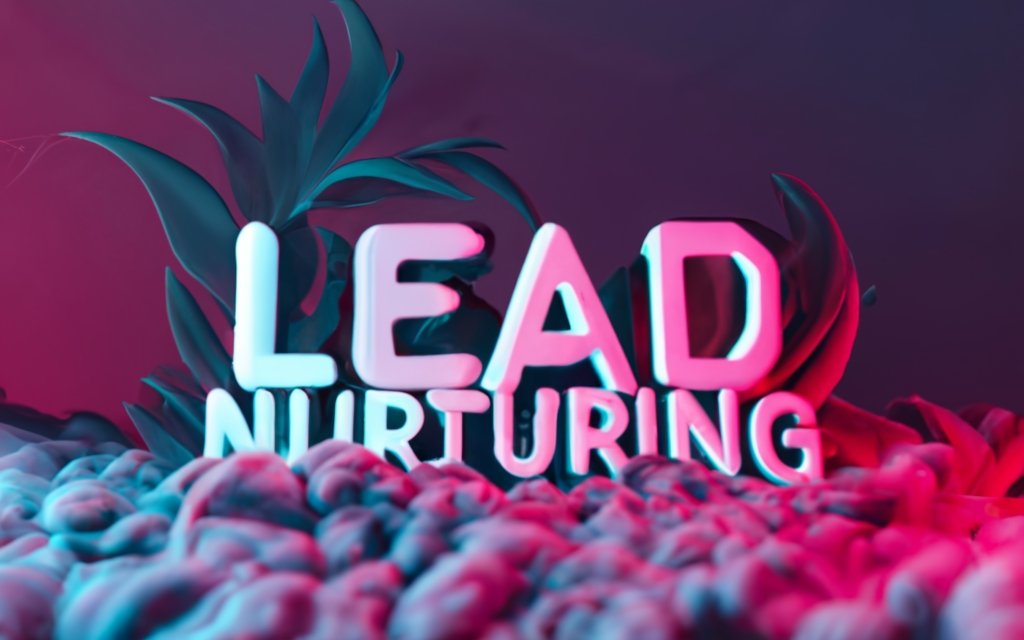
The Importance of Lead Nurturing
In today’s digitally-driven world, the traditional sales funnel is dying. Buyers now spend more time researching on their own before engaging with sales reps. In fact, one survey showed buyers are 57% through the purchasing process before contacting a vendor.
This makes lead nurturing critical to sales and marketing success. Nurturing builds awareness and trust to make prospects sales-ready. Let’s explore the many benefits of investing in thoughtful lead nurturing:
Keeps Prospects Engaged During Sales Cycle
Imagine you connect with a prospect at a trade show. They express interest but aren’t ready to commit yet. Without follow up nurturing, you risk losing them to a competitor or them simply forgetting about you.
Lead nurturing keeps your brand top of mind during the evaluation process through relevant, valuable communication. Instead of going silent after initial contact, you continue providing helpful information related to their needs and interests.
This serves two purposes:
- It keeps your company and solution fresh in the prospect’s mind, reminding them why they were interested originally.
- It builds goodwill by showing you want to educate, not just sell. Prospects appreciate vendors who provide insight and content tailored to their situation.
Nurturing helps sustain prospect excitement and engagement from initial contact all the way through to a sale. Maintaining open communication makes it easier to know when a lead is sales-ready.
Nurtured Leads Convert at Higher Rates
Drip marketing campaigns yield significant results. According to Anand Thaker, nurtured leads make 47% larger purchases compared to non-nurtured leads. Clearly, investing in ongoing lead engagement pays off.
Why are properly nurtured leads so much more likely to convert?
- They have more touchpoints with your brand, developing familiarity and trust in your solution.
- They consume tailored content that speaks directly to their situation, illustrating your fit.
- They have more of their concerns and questions addressed, reducing barriers to purchase.
- They have time to gain buy-in across their organization before committing.
With each relevant, valuable touchpoint, you become a trusted advisor rather than a pushy sales rep. This makes the prospect far more receptive when the time comes to close the deal.
More Cost-Effective Than Sourcing New Leads
Imagine you invest significant time and money promoting a webinar. You generate hundreds of sign ups and make dozens of new contacts. But then you only follow up once before moving on. This wastes all that hard work acquiring net new leads.
According to MarketingSherpa, it costs only one-third as much to sell to an existing lead compared to new lead generation. Doubling down on nurturing is a proven cost-efficient strategy.
Nurtured leads are more familiar with your solution and have indicated interest already. They don’t require as much basic education. Contrast this to new outbound leads who have likely never heard of you before. It’s clearly more expensive to establish trust and credibility from scratch.
Leveraging existing leads just makes financial sense. Plus, as discussed above, properly nurtured leads convert at much higher rates anyway. It’s win-win all around.
Builds Trust and Brand Loyalty
Imagine you’re in the market for a new HR system. A sales rep reaches out with little knowledge of your needs, then disappears after you don’t commit on the first call. Do you feel this vendor truly understands you?
Now imagine receiving a drip email campaign with content tailored to your industry, role, and use cases. This shows the company cares enough to provide relevant value upfront, not just extract a sale. You’ve likely had this very experience – it makes a huge impression.
Thoughtful lead nurturing makes prospects feel understood and important. By providing the right information at each stage, you demonstrate genuine commitment to their success. This earns trust and strengthens brand perception.
Nurtured leads turn into loyal, satisfied customers. It’s no surprise 79% of marketers say nurturing improves customer lifetime value, not just short-term sales. Investing in relationships beyond the initial transaction pays dividends.
The Bottom Line
- Lead nurturing leads to higher response rates and larger deal sizes.
- It costs less to convert existing leads vs. sourcing unknown new leads.
- Ongoing communication keeps brands top of mind during lengthy sales cycles.
- Customized nurturing content builds credibility and trust.
In today’s crowded marketplace, customer-centric communication is the key differentiator that wins deals. Lead nurturing done right delivers outstanding ROI across the entire customer lifecycle – making it a foundational sales and marketing strategy.
Now let’s discuss how to map out an effective nurturing plan.
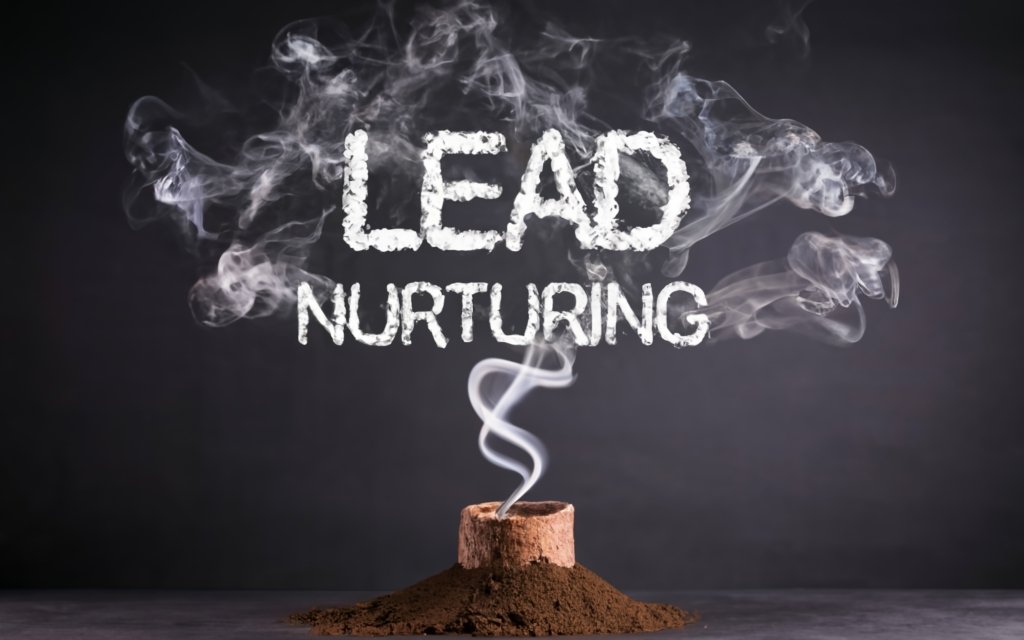
Developing an Effective Lead Nurturing Strategy
Now that you know what lead nurturing is and why it’s critical, let’s explore how to create an effective, high-converting nurturing strategy. Follow these key steps:
Identify Your Target Audience
To nurture leads appropriately, you must first understand them intimately. Build detailed buyer personas based on market research and customer data. Profile their demographics, firmographics, psychographics, challenges, goals, and motivations.
Tools like Clearbit’s Prospector enrich leads with firmographic data to enable personalization. The more insights you have into your ideal customers, the better you can tailor messaging to resonate.
Sample demographic questions to ask:
- What industry/job titles make up your best customers?
- What regions do they operate in?
- What is their company size or annual revenue?
Sample psychographic questions include:
- What problems or pain points are they dealing with?
- What values and priorities influence their decision process?
- How do they consume information and make purchasing choices?
Documenting your high-value target audiences guides your nurturing programs to cut through noise and grab attention.
Map the Buyer’s Journey
Today’s consumers are self-educating online across an average of 10+ touchpoints before engaging sales. This makes mapping your prospect’s journey critical.
A typical B2B journey includes:
Awareness Stage
The prospect realizes they have a problem requiring a solution, but lacks knowledge of options. They are conducting early research online and through peers.
Sample touchpoints:
- Searching “HR software reviews”
- Clicking social media ads
- Attending HR conferences
Consideration Stage
The prospect understands the competitive landscape and is comparing solutions against needs. They are consuming more targeted content like case studies.
Sample touchpoints:
- Downloading pricing guides
- Signing up for product demos
- Consulting reviews on G2 Crowd
Decision Stage
The prospect has evaluated options and is ready to commit, pending questions/concerns addressed. They engage via trials and final vendor conversations.
Sample touchpoints:
- Emailing sales inquiries
- Scheduling sales calls
- Signing up for free trials
Plot out your typical buyer’s journey from awareness through consideration to decision. Identify channels and content types that influence their path to purchase. This enables you to deliver the right information at the right times.
Create Nurturing Content
With target audiences and journeys mapped, the next step is developing compelling content that educates and persuades.
Aim for a mix of formats including:
- Blogs: Helpful articles addressing common pain points, use cases and industry trends.
- eBooks/Guides: More in-depth research reports or “how to” manuals.
- Videos: Tips, tutorials, customer testimonials, product explainers.
- Webinars: Educational presentations with Q&A.
- Whitepapers: Data-driven thought leadership on industry challenges.
Content should align to questions and concerns that arise at each buyer stage. For example:
Awareness Stage Content
- Overview of HR software capabilities
- Comparison guides contrasting options
- Top challenges of manual HR processes
Consideration Stage Content
- ROI analyses and business value data
- Implementation plans and methodology
- Customer success stories
Decision Stage Content
- Product demos and free trials
- Common questions/objections handling
- Pricing and payment plans
Utilize lead intelligence like job titles and company size to personalize content using dynamic fields such as:
“As a {job_title} at a {company_size} company, we understand you face {common_pain_point}.”
This level of targeting makes content resonate like it was written for each recipient individually.
Automate Campaigns and Workflows
With an audience-focused content strategy in place, it’s time to automate nurturing touchpoints through marketing automation.
Major channels to nurture leads include:
- Email: Segment lists for tailored email sequences when prospects hit key actions like content downloads.
- Social: Retarget engaged prospects with relevant ads, offers, and posts.
- Direct Mail: Send personalized packages, postcards, or gifts matching interests.
- Web Push: Notify site visitors of related content or promotions through browsers.
- Text Message: Provide alerts and quick updates via SMS when opened.
Use lead intelligence and behaviors to trigger relevant communication across channels automatically. For example:
- Prospect downloads pricing guide -> receives email sequence about product capabilities.
- Site visitor views specific product pages -> sees retargeted social ads for that product.
- Lead clicks email link 3 times -> gets added to new highly engaged segment.
Workflows react in real-time based on where prospects are in their journey to send suitable messaging via appropriate channels.
Integrate CMS and CRM Platforms
To coordinate nurturing seamlessly, integrate your:
- CRM: Central database for managing leads and sales pipeline.
- Marketing Automation: Nurturing campaigns tied to lead activity.
- CMS: Houses all marketing content from blogs to resource libraries.
- Email: Platform for sending, tracking email sequences.
- Analytics: Determines how prospects interact with content.
Bi-directional syncing via APIs ties these platforms together for complete data and workflow handoffs. This way, prospects get consistent, unified nurturing.
For example, someone downloads an ebook from your CMS then automatically enters a nurturing flow in the marketing automation system. Or email click activity syncs back to update lead scores in the CRM.
It’s a seamlessly connected ecosystem that allows optimizing nurturing with complete data insights.
Track and Optimize Performance
With your nurturing foundation in place, the final step is continuously monitoring, measuring and improving through:
Actionable Analytics
Leverage analytics across platforms to uncover:
- Open/click-through rates on emails
- Time spent on pages
- Content downloads
- Lead scoring trends
- Form submission rates
- Marketing qualified leads (MQLs)
These provide quantifiable insight into how prospects engage. Monitor key metrics over time and compare across segments.
A/B Testing
Run regular split tests to identify top performing nurturing elements like:
- Subject lines
- Content offers
- Calls to action
- Email copy styles
- Automation triggers
The more data you collect, the smarter you can optimize programs.
Surveys
Ask for direct feedback through quick surveys or polls. Get input on content quality, campaign frequencies and depth of personalization.
Continuous optimization is key to improving connections with prospects. Test and iterate to ensure messaging, content and outreach channels remain aligned to your audience’s needs and preferences.
By following this methodology, you can develop an effective, automated nurturing strategy that generates more qualified leads. Now let’s explore how partnering with a lead nurturing service can help scale success.
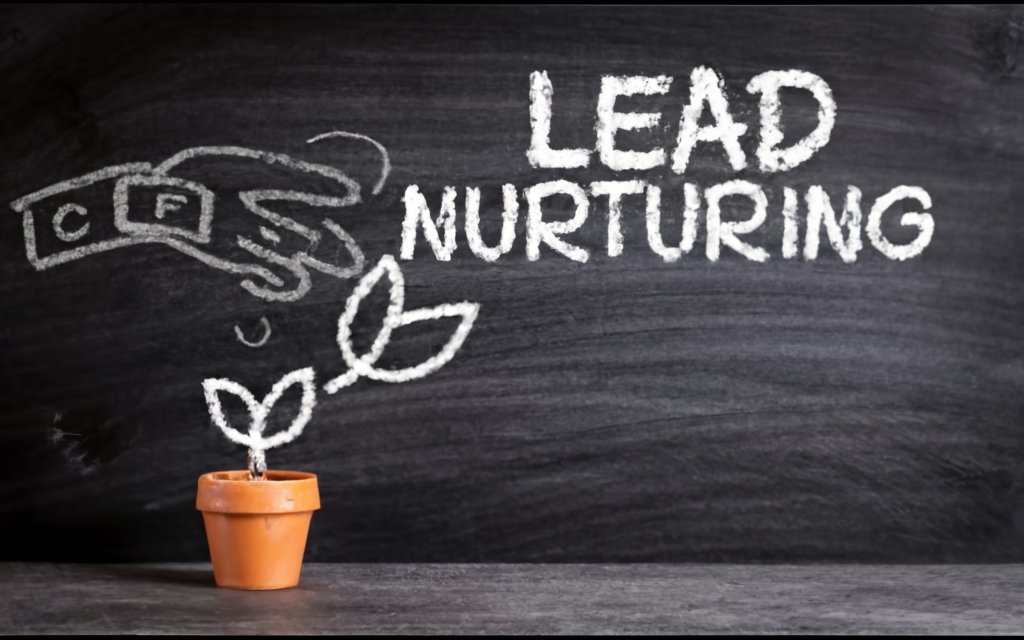
Hiring a Lead Nurturing Agency/Service
For many companies, working with a specialized lead nurturing service makes sense to scale success faster. Here are key factors to evaluate when selecting an agency partner.
Research Industry Expertise
Not all nurturing experts are created equal. Seek specialists with proven success in your specific market or vertical. This ensures they understand your buyers and can craft targeted campaigns.
Relevant pedigree questions include:
- How many clients have you nurtured in {your industry}?
- What past results have you achieved for similar companies?
- What differentiates your approach for our vertical?
Look for thought leaders recognized for innovation and results, such as:
- Authored books related to your field
- Speak at industry conferences
- Profiled in your trade press
Subject matter expertise tailored to your niche helps drive better engagement and conversions.
Evaluate Technology Capabilities
Sophisticated marketing technology and automation is fundamental to effective nurturing. Thoroughly vet potential partners’ platforms and integrations.
Key elements to examine:
Marketing Automation System
- Features for segmentation, lead scoring, and campaign creation
- Email deliverability and compliance monitoring
- Analytics on campaign performance
CRM and CMS Integrations
- APIs enabling real-time, bi-directional data syncing
- Unified interfaces to access customer data
- Support for sales and marketing alignment
Data Management
- Data hygiene practices to maintain accuracy
- Tools to append demographic and firmographic lead profiles
- Ongoing database audits and maintenance
The right martech stack tailored to nurturing allows accurately targeting prospects with the optimal message via the best channel at the right time.
Assess Campaign Strategy and Planning
Beyond technical expertise, you want a partner who takes the time to understand your goals, processes, and customers.
Strategic planning questions include:
- How will you research our target personas and map journeys?
- What methods will you use to segment and prioritize leads?
- How will you develop personalized, compelling content?
Look for detailed frameworks around:
- Conducting audience research
- Documenting nurturing workflows
- Developing content strategies and messaging
This diligent upfront planning ensures nurturing aligns to your unique business needs.
Review Performance Tracking and Optimization
To continually improve, nurturing programs must be actively measured and optimized.
Discuss their optimization approach:
- What KPIs will be tracked? Which platforms will provide reporting?
- How frequently will campaign performance be reviewed?
- What methods will you use to test and improve programs?
Also understand their attribution modeling capabilities to quantify ROI:
- How will you track nurtured leads through the sales pipeline?
- How will you calculate the revenue impact of campaigns?
- How will you optimize to convert more net new leads?
Data, testing, and attribution help maximize the value of your investment.
Check Pricing Models and Scalability
When evaluating potential partners, be sure to analyze pricing models and scalability options.
- Is pricing outcome-based (tied to conversions) or flat monthly fees?
- How can campaigns be cost-effectively scaled to nurture more leads?
- Are there minimum commitments or tiered packages?
Additionally, understand how they resource campaigns as volumes increase:
- At what thresholds do staffing and costs increase?
- Can remote lead experts be leveraged for greater efficiency?
- What is the process to onboard additional team members?
The right partner provides transparency into investment levels required to nurture leads at scale.
In Short When Selecting a Lead Nurturing Service:
- Target industry specialists with proven expertise in your niche.
- Thoroughly evaluate marketing technology and automation capabilities.
- Seek strategic planning around audience research, workflows and content.
- Review optimization and attribution models to maximize ROI.
- Understand pricing models and processes to scale campaigns efficiently.
An experienced, capable partner provides the people, processes, and technology to take your lead nurturing programs to the next level.
Now let’s recap the key points we’ve covered to drive effective lead nurturing.
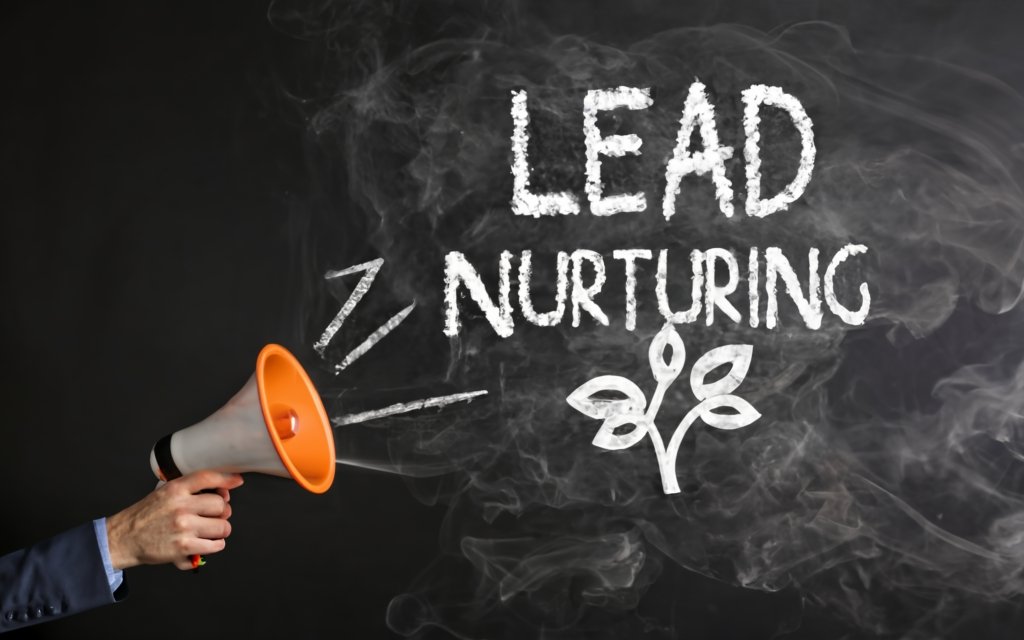
Key Takeaways on Lead Nurturing Services
Let’s recap the core concepts we’ve covered to succeed with lead nurturing:
What is Lead Nurturing?
- Ongoing communication to guide prospects through their buyer’s journey.
- Builds relationships post-lead capture unlike lead gen’s broad outreach.
- Delivers value to earn trust rather than insisting on quick sales.
Why Lead Nurturing Matters
- Higher conversion rates – nurtured leads make 47% larger purchases.
- Shorter sales cycles since prospects self-educate with helpful content.
- Higher customer lifetime value by establishing enduring relationships.
- Better alignment with modern buyers’ preferences for self-directed research.
Developing a Nurturing Strategy
- Map detailed buyer personas and purchasing journeys.
- Create targeted content like emails, ebooks, webinars matching needs at each stage.
- Automate workflows across channels to deliver relevance at scale.
- Track KPIs and run A/B tests to continuously optimize performance.
Hiring a Lead Nurturing Service
- Seek proven experts in your specific industry with pedigree.
- Evaluate martech stacks and API integrations powering automation.
- Align campaign strategies to your audiences, personas and goals.
- Review optimization processes and attribution modeling to quantify ROI.
- Understand pricing models and processes to scale campaigns on demand.
The Bottom Line
Lead nurturing is essential to sales and marketing success in modern buyer-driven landscapes. It fuels predictable revenue growth through building relationships with prospects over time.
Done right, nurturing drives higher response rates, larger deal sizes, faster sales cycles, and greater customer retention. But executing an effective strategy requires specialized expertise across technology, automation, data, content, and testing.
That’s where a dedicated lead nurturing agency comes in. The right partner provides the people, processes, platforms and performance tracking to take your nurturing programs to the next level.
They become an extension of your team, seamlessly guiding prospects from lead capture all the way through to closed sales using metrics-driven best practices.
If nurturing more leads to revenue growth is a priority for your business in 2023, now is the time to act. Reach out to sample and vet potential service partners today.
Let’s connect to explore if outsourced nurturing support could benefit your marketing and sales pipelines. With the right strategy and partner, you’ll be growing faster and more profitably in no time.
Summary on Lead Nurturing Services
Lead nurturing is the process of building relationships with prospects through ongoing, personalized communication to guide them from initial interest to closed sale.
Here are the core takeaways covered in this comprehensive guide:
- Lead nurturing is different from lead generation in that it focuses on developing prospects already in your pipeline vs. acquiring net new leads.
- Thoughtful nurturing keeps prospects engaged, shortens sales cycles, improves conversion rates, and increases customer lifetime value.
- Effective nurturing strategies require research to map detailed buyer journeys, creation of tailored content, workflow automation, and performance optimization.
- Specialized lead nurturing agencies excel at leveraging platforms, automation, data, content, and testing expertise to execute high-performing campaigns.
- When evaluating nurturing partners, seek industry expertise, martech capabilities, strategic planning, performance tracking, and transparent pricing.
- Investing in a metrics-driven nurturing strategy and platform pays dividends across pipelines, revenue, and customer relationships long-term.
The next step is to connect with potential service providers to assess if outsourced support is right for taking your nurturing programs to the next level.
With the right strategy and partner, you’ll be equipped to continuously engage prospects, accelerate growth, and maximize the value of your marketing and sales efforts.
Frequently Asked Questions
What are the main benefits of lead nurturing?
The core benefits of lead nurturing include higher conversion rates, increased deal sizes, shorter sales cycles, improved marketing ROI, and higher customer retention and lifetime value.
What types of content are used in nurturing campaigns?
Typical nurturing content formats include blogs, ebooks, whitepapers, case studies, videos, webinars, email newsletters, social media posts, and direct mail.
How does lead nurturing differ from lead generation?
Lead generation involves attracting new, unqualified prospects, while lead nurturing focuses on developing relationships with existing leads in your pipeline through personalized, relevant communication over time.
When does lead nurturing begin?
Lead nurturing starts once a prospect enters your sales funnel by signing up for content or interacting on a website or social media. Their level of interest is then nurtured further down the buying journey.
What technologies are required for lead nurturing?
Key platforms needed for lead nurturing include a CRM, marketing automation, email marketing, and analytics tools connected via APIs to enable data-driven automation.
How do you track and optimize nurturing campaigns?
Key performance metrics to track include open/click rates, content engagement, lead scoring trends, sales pipeline impact, and ROI. Campaigns are optimized through A/B testing content and offers.
Why hire a lead nurturing service?
The specialized expertise, proven frameworks, platforms, and campaign execution experience of nurturing services enables scaling results faster than handling in-house.
How much does outsourced nurturing cost?
Costs vary based on services provided and volumes, but often include flat monthly fees and/or pricing tied to conversion rates. Packages are designed for different budgets.
What results can I expect from working with a nurturing partner?
Quality nurturing services consistently generate a 3-5X return on investment via increased pipeline conversion rates, larger deal sizes from sales-ready leads, and expanded customer lifetime value.
Reach out to explore if outsourced nurturing support is right for your business!

